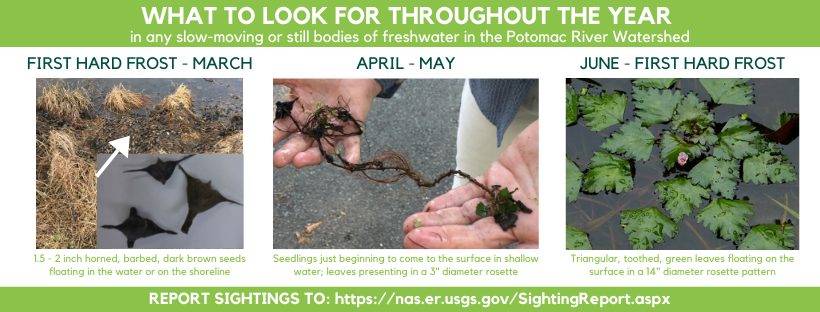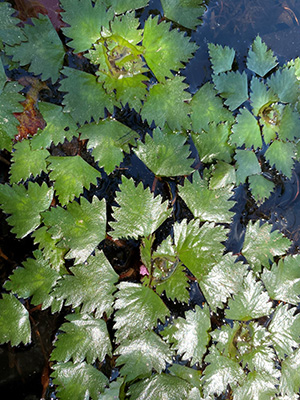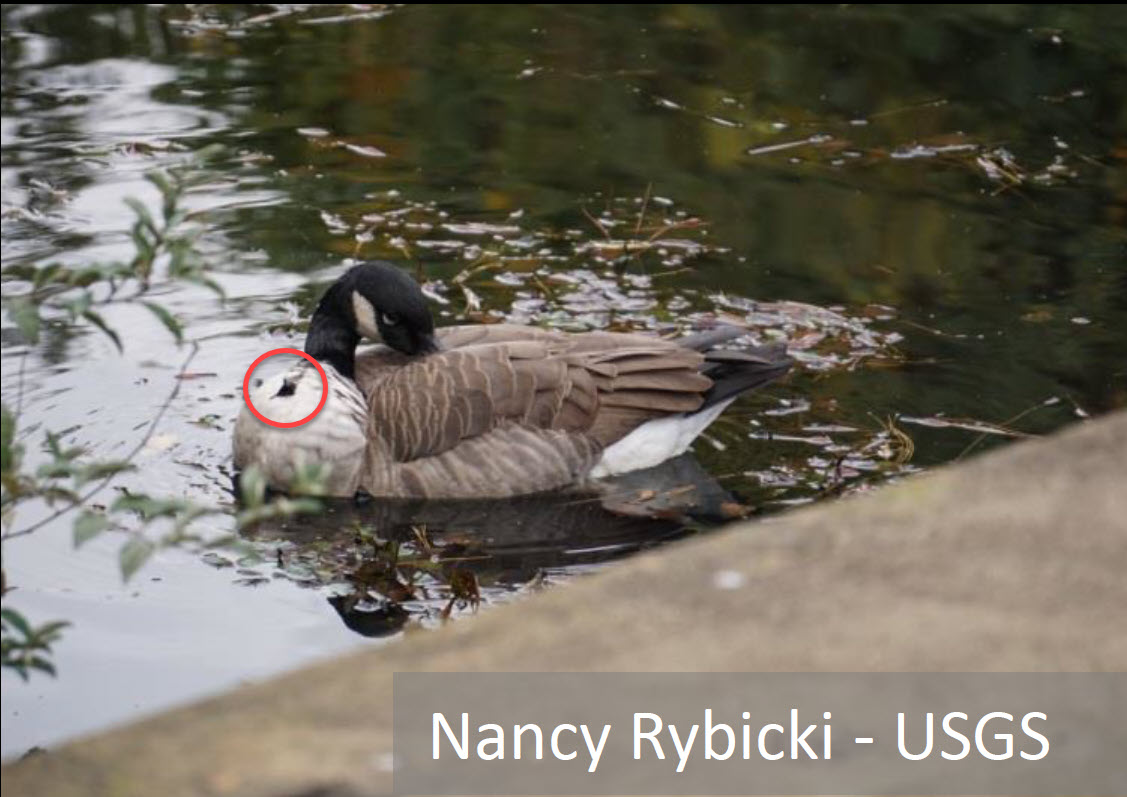Trapa bispinosa
Two-horned Trapa is an invasive aquatic plant. As of 2025 it has been reported from over 170 waterbodies in our region. Over half of those sites are in Fairfax County. Sometimes known as Water Chestnut, this plant grows in calm or slow flowing, shallow freshwater. It forms dense mats on the water’s surface, which crowd other plants and animals. This harms our environment. It also makes boating, fishing and swimming difficult and it clogs stormwater ponds. Two-horned Trapa is named after the spiny, barbed seeds, which hurt when they pierce clothing and skin. This invasive was first reported in the US in Virginia in 1995.
Two-horned Trapa plants mostly sprout in May and June but can be seen as early as the last half of April. The plants die at the first hard frost (November/December) but the seeds remain in the muddy bottom, waiting to sprout in the future.
You can help by reporting this invasive plant! It is very important that we prevent this invasive species from reaching the Potomac River and the Chesapeake Bay, where control would be very difficult and very expensive! Use the USGS - Sighting Reporting Form.





